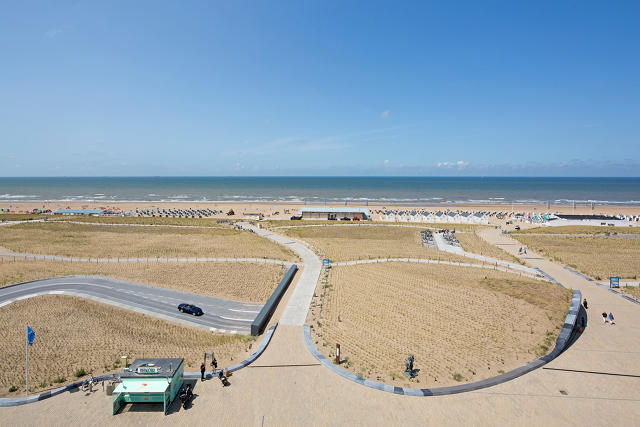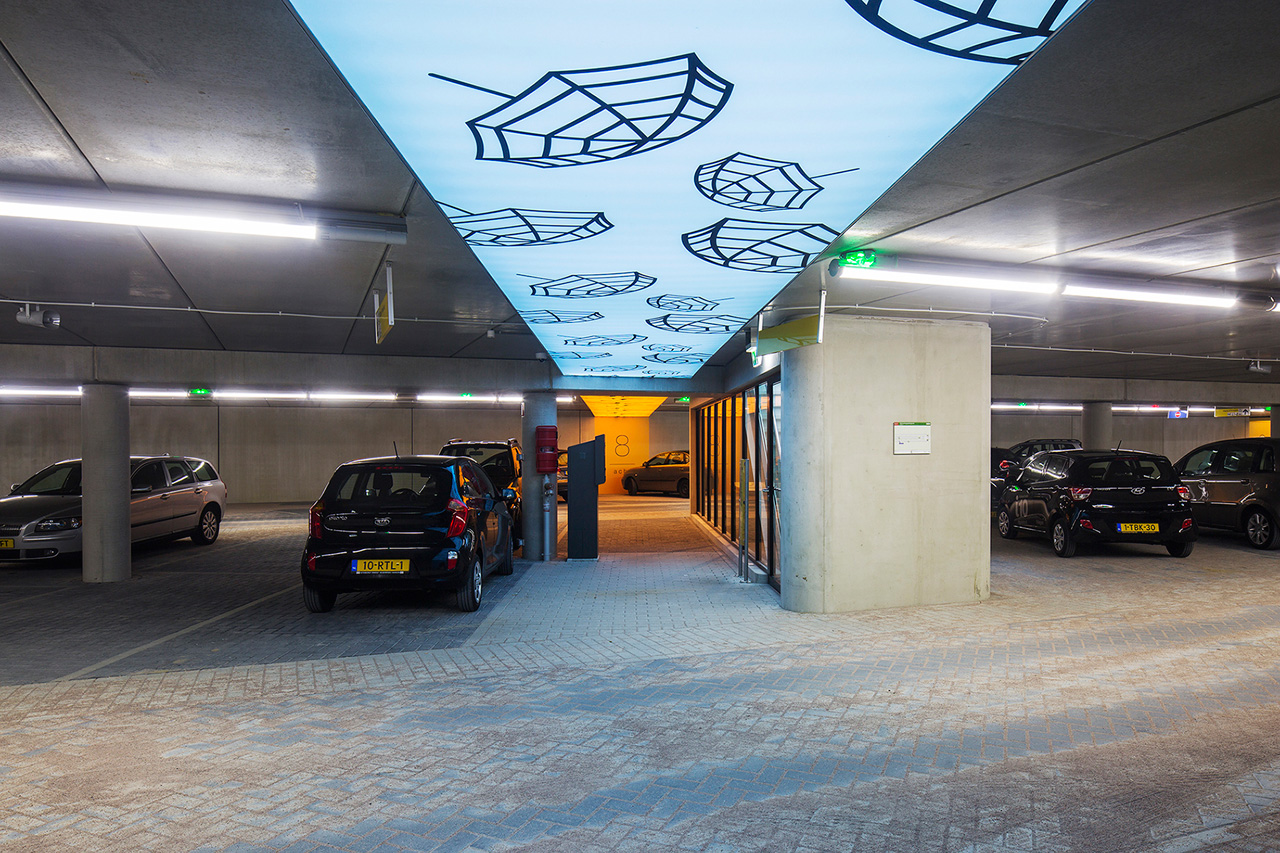The Netherlands Voted A Garage Its Best Building Of The Year—Here's Why
Schools, hospitals, houses, churches. Of the 125 projects competing for the title of the Royal Institute of Dutch Architects' Best Building Of The Year, there were plenty of very visible, beautiful contestants. But you might not even notice the building that won.
It’s a subterranean parking garage holding 670 spots, covered by rolling sand dunes along the coastline of a small coastal town called Katwijk aan Zee ("Katwijk by the sea"), a beach town west of Leiden and north of the Hague. An underground parking garage may not fit the mold of the kinds of projects that typically win design competitions. Yet, while the architecture itself is fairly straightforward, the garage is just one part of the larger, holistic project, as both the judges and Bustler pointed out. Its scope and mission are far larger than those of a typical building.
The jury called it "virtually flawless," and more than 5,000 people voted it the year's crowd favorite, beating out entries by the likes of MVRDV and other major Dutch architects.

The Netherlands is one of the most endangered country in the world when it comes to sea level rise. A 2014 analysis by Climate Central showed that it tops any other country on Earth in terms of the percentage of the population that will be exposed to climate change; a whopping 47% of the country's population currently lives on dry land that will be below sea level by the end of this century. Within this already at-risk country, coastal towns like Katwijk aan Zee are the most endangered. These are places where climate change is already visible—cities and villages that are already racing to build the infrastructure necessary to stall the endlessly rising ocean tides.
Historically, the Netherlands has led the world with its innovative approach to mitigating flooding—in the 1950s, severe flooding spurred the creation of something called the Delta Programme, a sprawling national project that involves agencies at every level of government to better protect the country from flooding. But over the past two decades, Delta and its related water management programs are being tested with unprecedented urgency.
A few years ago, the Dutch government identified 10 places that it called "" in the country’s flood defense system. Katwijk aan Zee was one of them. The town’s old dam excluded some 3,000 people from its protection zone, the government pointed out. It, along with almost 90 other sites around the Netherlands, had to shape up.

So the town launched a flood program of its own: A 70-million-Euro plan called called Kustwerk Katwijk, or "coastal work Katwijk." To understand its approach, just look at its logo: a sandy beach dune sitting on top of two structures: a wall, and a parked car. This is the basic schematic of a concept called "dike in dune." It’s a two-pronged approach to flooding that uses sand dunes to slow the velocity of storm surges and waves as they crash into an embedded dike, or dam.
The dike itself is a strong, high, stone barrier designed to stop storm surges in their tracks. Meanwhile, over it, three million cubic meters of sand was dredged to shape the new dune landscape—which is carefully optimized to slow the force of inundation by storms. OKRA, the landscape architects behind the project, laced the dunescape with walking paths and herb plantings that help reduce erosion and bolster the ecology of the new coastline. According to the city, it’s a "robust and durable" solution that’s simple by design: If "adjustments" are needed in a few decades, "this can be realized without much intervention," it explains on its website.
And then there’s the parking garage: a necessary piece of public infrastructure suited for a beach town with plenty of tourists. Designed by a collective including Royal HaskoningDHV and OKRA Landscape Architects, it’s a long, thin box that’s covered with carefully shaped dunes, which rise up organically in four places to create subtle entrances and exits that also let natural light into the underground space.
It’s hard not to wonder at the simple brilliance of the idea: while rebuilding the town’s dike and reshaping its dunes, the design team recognized an opportunity to genuinely improve public space by hiding an expensive and space-sucking piece of urban infrastructure inside it.

It’s incognito architecture, an example of what Royal HaskoningDHV’s Richard van den Brule calls "water edge development." Royal Haskoning is now exporting these ideas around the world: it won a competition to lead the reclamation of land in Jakarta Bay, van den Brule says, and collaborated with OMA to create a flood plan for Hoboken, New Jersey, for the competition Rebuild By Design after Hurricane Sandy decimated the Atlantic Coastline.
Even though the building is the result of almost 70 years of work in flood policy and research in the Netherlands, it’s as unassuming as a structure can be. At night, the exits nestled under the gently rolling dunes light up to become beacons along the shoreline. During the day, you might notice the sun reflecting off the glass that covers the entrance. Otherwise, it fades into the postcard view of the
'현대건축' 카테고리의 다른 글
| C.F. Møller Designs New Headquarters for LEGO (0) | 2016.07.29 |
|---|---|
| Rijksmuseum Releases 250,000 Images of Artwork for Free Download (0) | 2016.07.26 |
| Portraits of Álvaro Siza by Fernando Guerra (0) | 2016.07.19 |
| The “Future of Suburbia,” according to MIT (0) | 2016.07.14 |
| The New Tate Modern Opens to the Public (0) | 2016.07.14 |